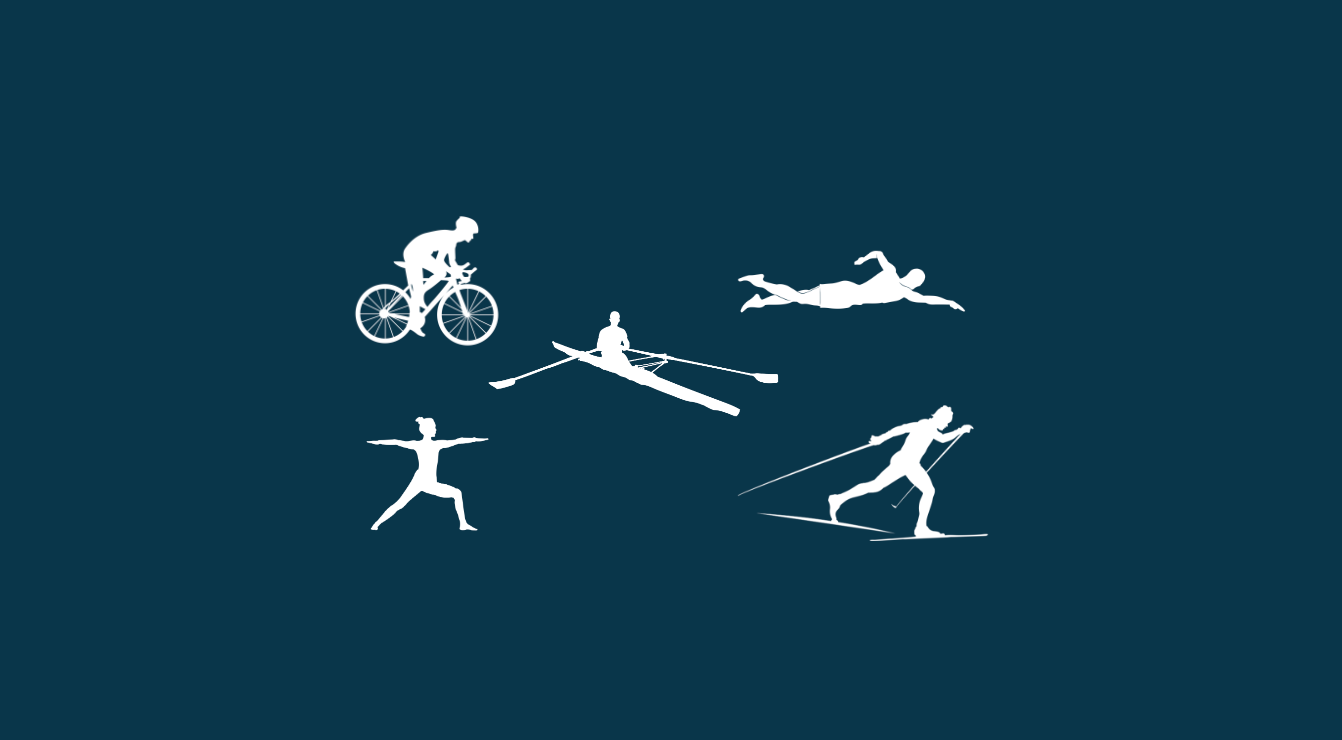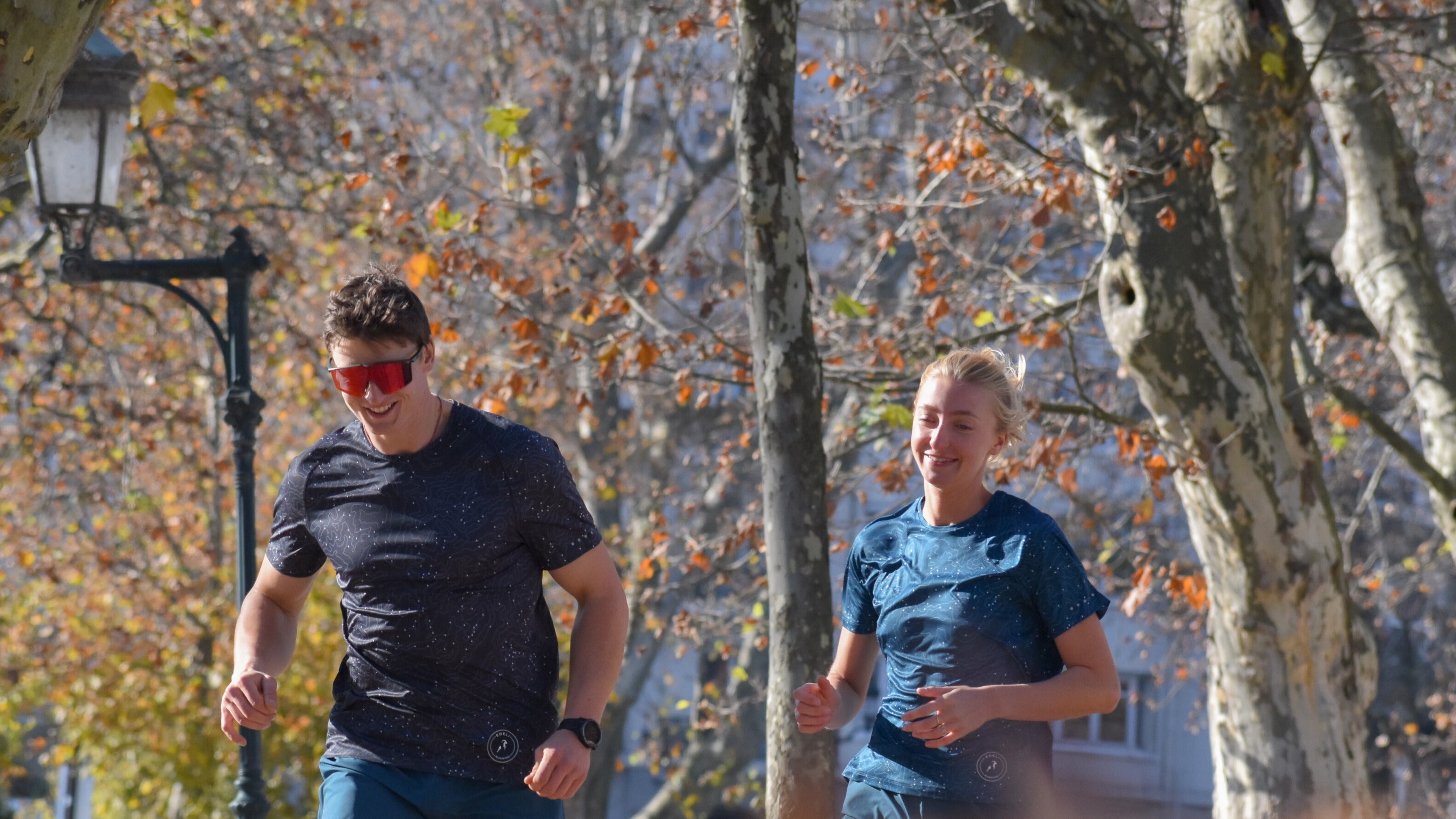
5 complementary sports to running
To continue practicing and enjoying running for as long as possible, a key tip is to regularly practice one or more sports that complement running.
For what ?
Both for physiological and psychological reasons:
- Physiological to better balance our musculature and change/reduce impact zones
- Psychological so as not to start getting too tired of a certain monotony and for the diversity of sensations and experiences that different sports practices bring us.
Before becoming a long-distance triathlete, I was first a marathon runner. I was therefore able to compare the daily training between a runner preparing for a marathon and a triathlete preparing for a long-distance triathlon (Half or Full IronMan). And even if the logistical organization for training, the race strategy and the equipment are clearly more complex in the case of long-distance triathlon, the diversity of the three sports practices remains the main difference and the key advantage in the daily training of long-distance triathlon.
Without going as far as practicing long-distance triathlon, it remains possible for any runner to benefit from a diversified sporting practice beyond just running.
So what other sports practices should you develop in addition to running?
Below we recommend 5 different ones to choose from, each of which has complementary benefits to regular running practice.
1. The bike:
Cycling (especially road or gravel) is very complementary to running. It is particularly beneficial for basic pace, cardiovascular endurance and for reducing impacts on the knees/hips. It uses our muscles differently and reduces the risk of injuries related to overuse of ligaments or joints.
2. Swimming:
Swimming is also a very complementary sport to running. It is an excellent cardiovascular workout without excessive impact on the joints. It also puts much more strain on the upper body than running or cycling. The only downside: swimming is a more technical discipline than running or cycling. But it is never too late to take lessons to improve your technique and learn to swim more efficiently.
3. The rower or oar:
Practicing rowing or doing rowing sessions is also an excellent way to diversify your training. We find the same benefits as for 'weight-bearing' sports such as cycling and swimming, namely additional muscle strengthening (very complete in the case of rowing or rowing: back, arms, trunk, legs), effective cardiovascular work and low impact on the joints.
4. Yoga:
The practice of Yoga brings a series of benefits that are different but perfectly complementary to endurance sports such as running, cycling, swimming or rowing. Yoga improves our flexibility, suppleness, balance, breathing and our ability to manage stress, to focus on the present moment. So many benefits that allow a holistic approach to our sports practice and that extend the benefits well beyond the improvement of our cardiovascular capacity.
5. Cross-country skiing:
This sport is more difficult to practice first because it is a winter sport. It is therefore not easy to practice it often or regularly unless you live near a mountainous region. It also requires learning a good sliding technique, especially for skating (or no skating). However, it is a very complete sport and perfectly complementary to running. If you have the opportunity to practice it even if it is only irregularly, do not hesitate. You will also enjoy magical landscapes of mountains or snowy forests.
We have selected these five complementary sports practices to running. The list could have been extended to other sports such as climbing (for the development of the upper body), ski touring (as a 'cousin' sport to cross-country skiing) or even boxing or cross-fit for indoor sports practices. It is up to each person, according to their preferences, to choose the complementary sports practice(s) that suit them best. The important thing is to regularly include at least one or two in addition to running training for a more balanced, more diversified and less monotonous overall sports approach.
Please note: the Hirondelle T-shirt from the FREE RUNNER collection is perfectly suited not only for running, but also for Yoga with a cut at the back. slightly elongated to cover the kidneys.
Conversely, there are sports that are relatively risky and can permanently deprive you of the joys of running, especially because they can cause more or less serious injuries. This is particularly the case for many team sports where the risk of injury linked to a potential collision with an opponent is relatively high, such as rugby, football or handball. On the other hand, these sports clearly have a dual collective and fun dimension that makes them very attractive. It is up to each person to choose the sports practice(s) that he or she prefers by accepting the risks associated with this or that sports practice. It is not always easy to reconcile everything.
If you prefer running as your favorite sport, don't forget to include at least one other complementary sport. This will help you enjoy your passion for longer and have more fun.



Leave a comment
This site is protected by hCaptcha and the hCaptcha Privacy Policy and Terms of Service apply.